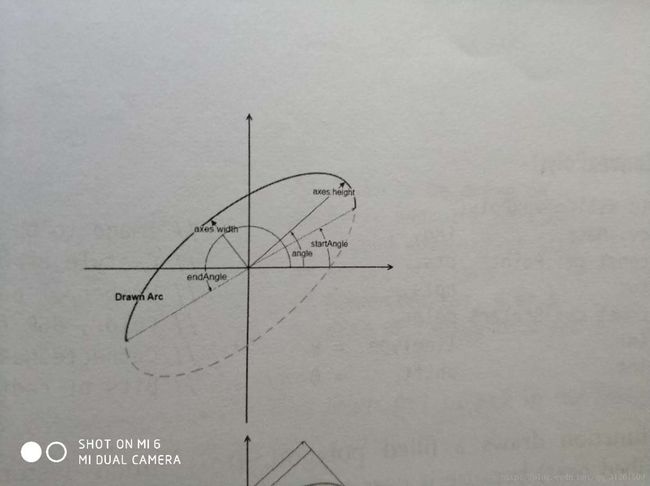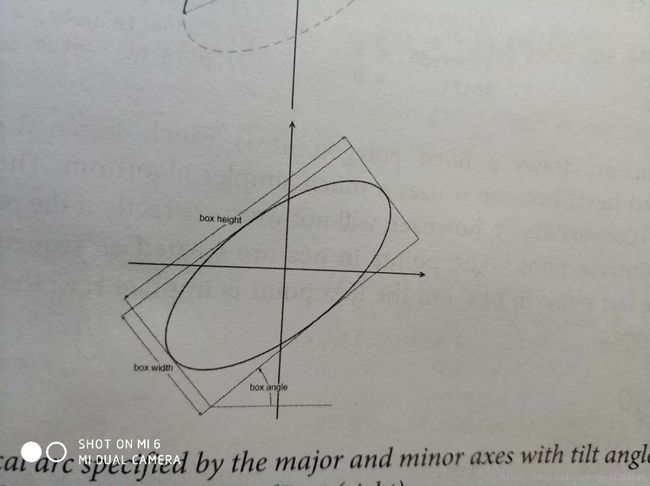opencv3在图片上的基本画图操作
本文主要参照东南大学出版社出版的《leanring opencv3》
cv::Scalar对象能够存储四个值,除了前三个值代表 BGR 外,最后一个通道能够表示一个alpha通道,在Opencv3画图操作中经常使用。
下面列举了常用的画图函数:
| Function | Description |
|---|---|
| cv::circle() | 画一个简单的圆 |
| cv::clipLine() | 判断一条线段是否在矩形框内 |
| cv::ellipse() | 画一个椭圆 |
| cv::ellipse2Poly() | |
| cv::fillConvexPoly | |
| cv::fillPoly() | |
| cv::line | 画一条线段 |
| cv::rectangle() | 画一个长方形 |
| cv::polyLines() |
cv::circle()
void circle(
cv::Mat& img, // 输入的图片矩阵
cv::Point center, // 定位圆心
int radius, // 圆的半径
const cv::Scalar& color, // 颜色, RGB
int thickness = 1, // 线段的厚度
int lineType = 8, // 连接方式, 4 或者 8
int shift = 0 // 半径需要被除的因子
)代码:
//
// Created by rui on 18-3-6.
//
#include "opencv2/imgproc.hpp"
#include "opencv2/highgui.hpp"
#include "opencv2/ml.hpp"
#include "opencv2/objdetect.hpp"
int main() {
cv::Mat image = cv::imread("/home/rui/Downloads/1684641879.jpg");
cv::Point center = cv::Point(500,500);
cv::Scalar color = cv::Scalar(0,255,0);
circle(
image, // 输入的图片矩阵
center, // 定位圆心
100, // 圆的半径
color, // 颜色, RGB
8
);
cv::imwrite("/home/rui/temp.png", image);
}
cv::clipLine()
cv::clipLine()
bool clipLine( // 返回True,如果线段在 imgRect 中
cv::Rect imgRect, // 正方形区域
cv::Point& pt1, // 线段起始点
cv::Point& pt2 // 线段终点
);
bool clipLine(
cv::Size imgSize, // 默认矩形的端点是(0,0),并且对应点为imgSize,其他和之前一样
cv::Point& pt1,
cv::Point& pt2
);- 比较简单就不写例子了
cv::ellipse()
bool ellipse(
cv::Mat& img, // 输入图片
cv::Point center, // 中心点
cv::Size axes, // 椭圆主轴和副轴的长度
double angle, // 相对主轴的倾斜角度
double startAngle, // 开始的角度
double endAngle, // 结束的角度
const cv::Scalar& color, //
int thickness = 1, //
int lineType = 8, //
int shift = 0 //
)
bool ellipse(
cv::Mat& img,
const cv::RotatedRect& rect, // 外围椭圆最小的矩形
const cv::Scalar& color,
int thckness = 1,
int lineType = 8,
int shift
)
cv::ellipse2Poly
待更
cv:fillConvexPoly()
待更
cv::fillPoly()
待更
cv::line()
- 主要作用是画一个线段
void line(
cv::Mat& img,
cv::Point pt1,
cv::Point pt2,
const cv::Scalar& color,
int lineType = 8,
int shift = 0
)
cv::rectangle()
- 主要作用是画一个长方形
void rectangle(
cv::Mat& img,
cv::Point pt1,
cv::Point pt2,
const cv::Scalar& color,
int lineType = 8,
int shift = 0
)
void rectangle(
cv::Mat& img,
cv::Rect r,
const cv::Scalar& color,
int lineType = 8,
int shift = 0
)
cv::polyLines()
待更
cv::Linelterator
待更
添加文字
| Function | Description |
|---|---|
| cv::putText() | 在图片上写入一个特殊的文字 |
| cv::getTextSize() | 返回文字的长度和宽度 |
cv::puText()
void cv::putText(
cv::Mat& img,
const string& text, //文字内容
cv::Point origin, // 文字起始点
int fontFace, // 设置字体
double fontScale, // 设置字体规模
cv::Scalar color,
int thickness = 1,
int lineType = 8,
bool boottomLeftOrigin = false
);- 实例
//
// Created by rui on 18-3-6.
//
#include "opencv2/imgproc.hpp"
#include "opencv2/highgui.hpp"
#include "opencv2/ml.hpp"
#include "opencv2/objdetect.hpp"
int main() {
cv::Mat image = cv::imread("/home/rui/Downloads/1684641879.jpg");
cv::Scalar color = cv::Scalar(0,255,0);
std::string text = "i don't know what are your saying???";
cv::Point origin = cv::Point(300,300);
cv::putText(
image,
text,
origin,
cv::FONT_HERSHEY_PLAIN,
3,
color,
5
);
cv::imwrite("/home/rui/temp.png", image);
}- 效果图
cv::getTextSize()
待更


